CAVO GRECO CYPRUS
Overview
Located in south eastern Cyprus, Cavo Gkreko Marine Protected Area was established in 2018 and delineates three distinct zones for marine protection (Fig 3). As per the MEDPAN (The Mediterranean Network of Marine Protected Areas Managers) the Cavo Gkreko MPA is characterised as an MPA with internal zones. It is typically divided into different zones with varying levels of protection and permitted activities, such as no-take zones, restricted use zones, and multiple-use zones. Zoning regulations specify activities allowed or prohibited in each zone to minimize human impacts on sensitive habitats and species. It is characterized by a high biodiversity of invertebrate species of high ecological value such as the Cystoseira spp. and Sargassum vulgare. Coralligenous biocenosis with incrustant rhodophytes have also been documented in the area, which is considered as reserve for many sponge species. Two of the most notable species of corals are C. caespitosa and D. ramea. These species are considered endemic to the Mediterranean Sea and are endangered and vulnerable (IUCN Red List), respectively, due to anthropogenic activities and stressors such as climate change and extreme weather events.
Cavo Gkreko MPA in Cyprus was selected for protection due to its unique ecological characteristics, which include diverse marine habitats including rocky shores, seagrass meadows, coral reefs, and underwater caves as well as other priority habitats such as Posidionia meadows (and other types of seagrass meadows), semi-submerged caves, underwater caves and subtidal rocky ecosystems (Figs 1-2). These habitats support a variety of marine species, as well as vulnerable and endangered species. It is home to several species of conservation concern, including the Mediterranean Monk Seal (M. monachus) and Marine Turtles (C. caretta, C. mydas), which rely on the area for feeding, breeding, and resting.
Moreover, Cape Greco serves as an important migratory route and breeding ground for several marine species, contributing to the overall richness and diversity of the Mediterranean marine ecosystem. The protection of this site is essential for maintaining the integrity of these habitats and supporting the long-term sustainability of marine biodiversity in the region.
Additionally, the establishment of no-take and restricted fishing zones within the MPA aims to mitigate anthropogenic pressures on marine ecosystems, such as overfishing and habitat destruction. By preserving critical habitats and reducing human impacts, Cavo Grecko MPA plays an important role in promoting the resilience and health of marine ecosystems in Cyprus and the broader Mediterranean region.
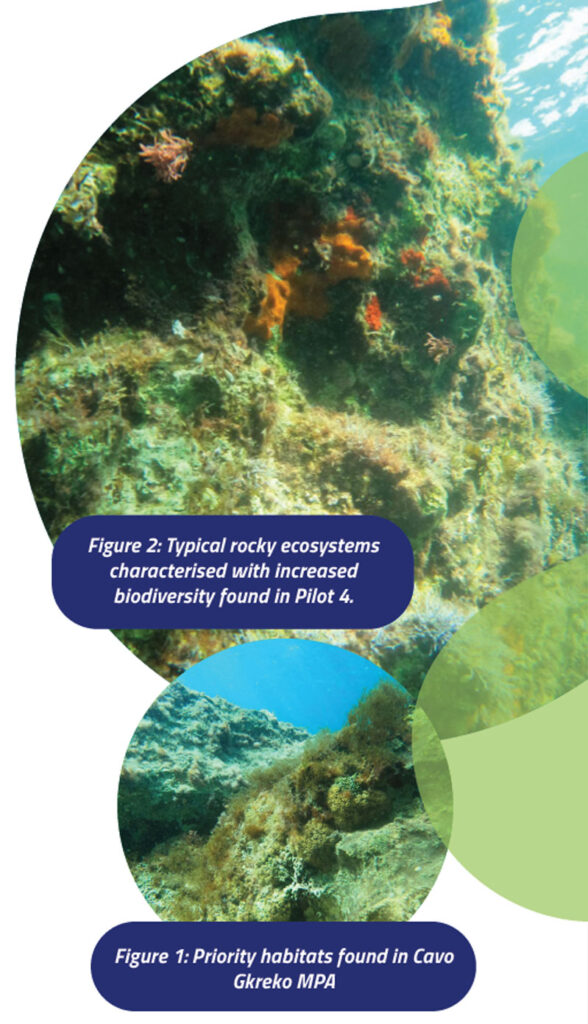
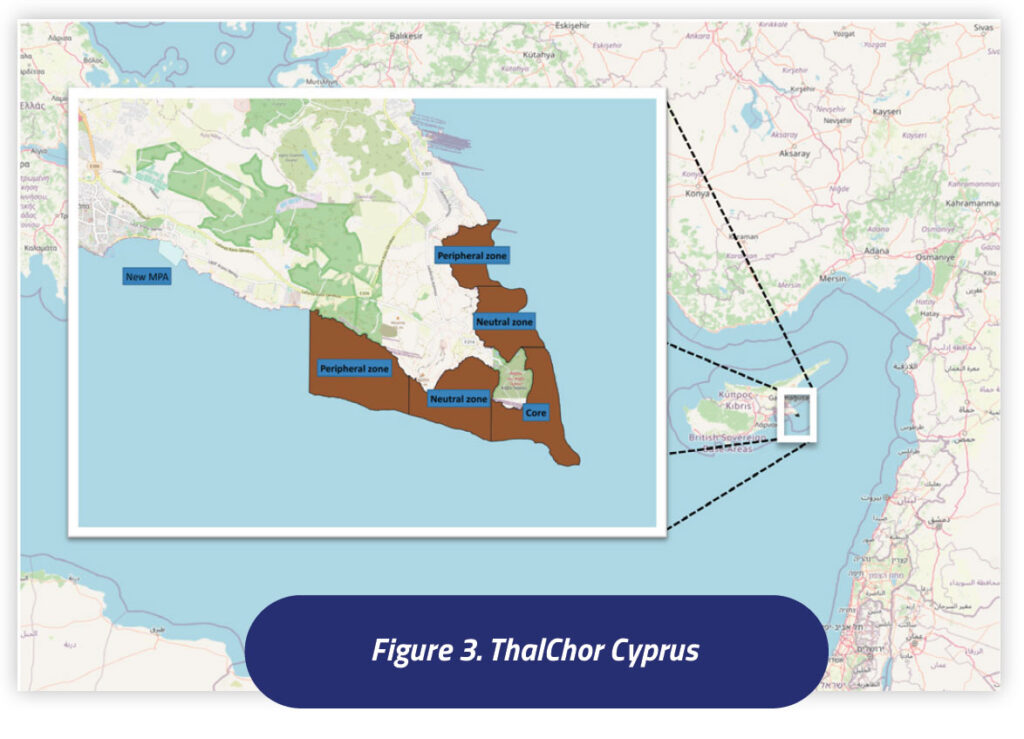
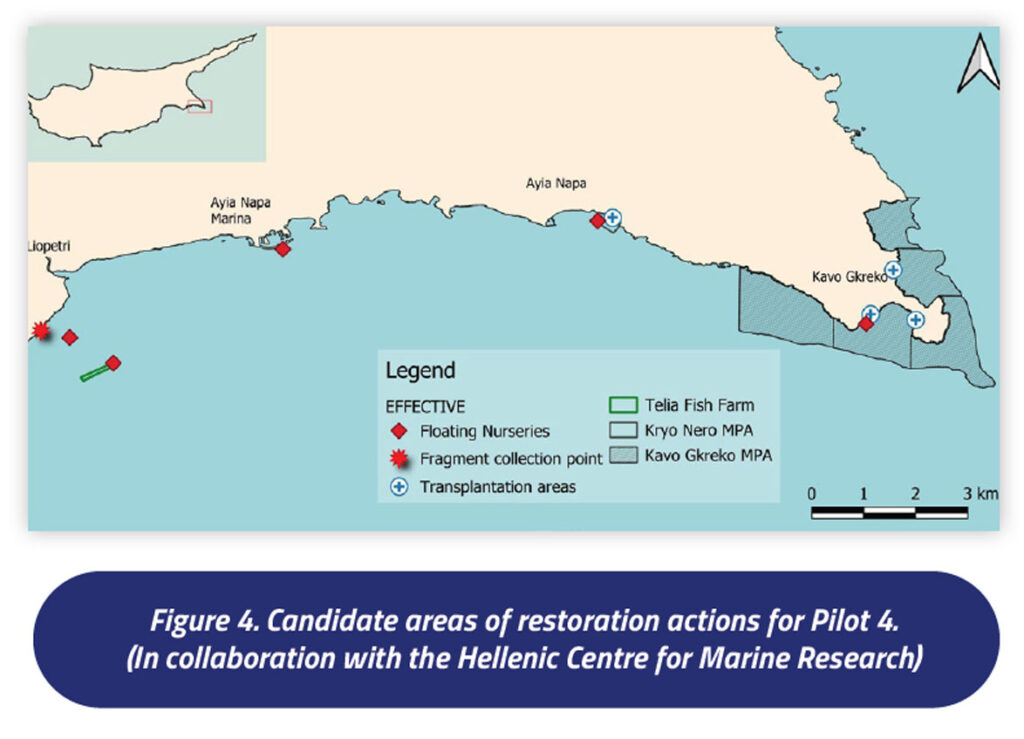
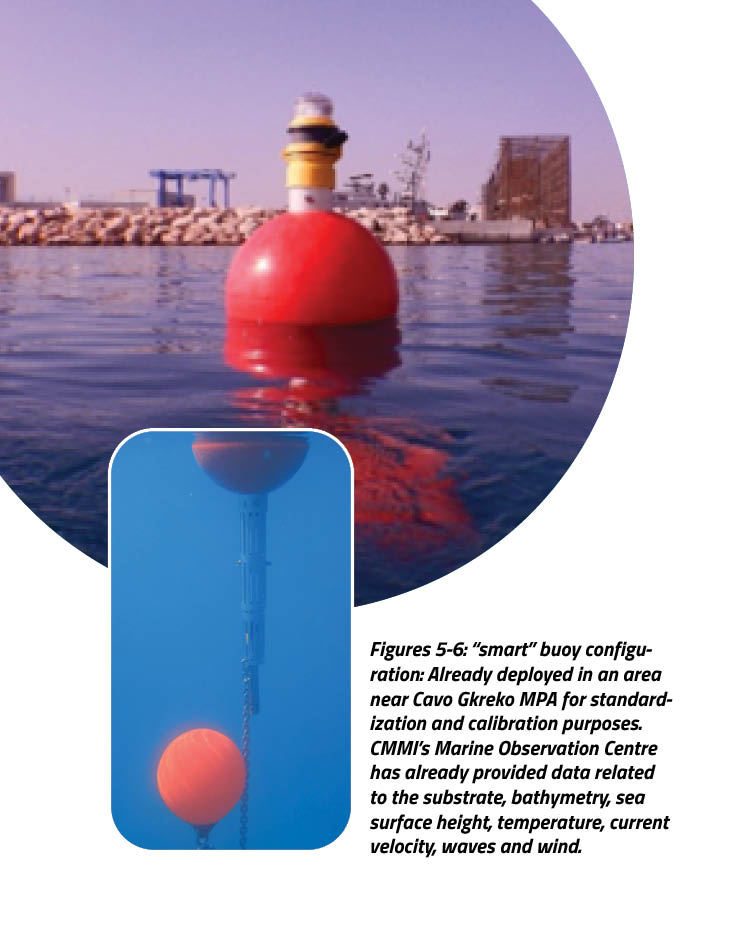
Availability of MPA data
CMMI’s data repository
Deployment of “smart” buoy operated by CMMI’s Marine Observation Centre – MOC. A detailed description of available environmental data collected can be found below:
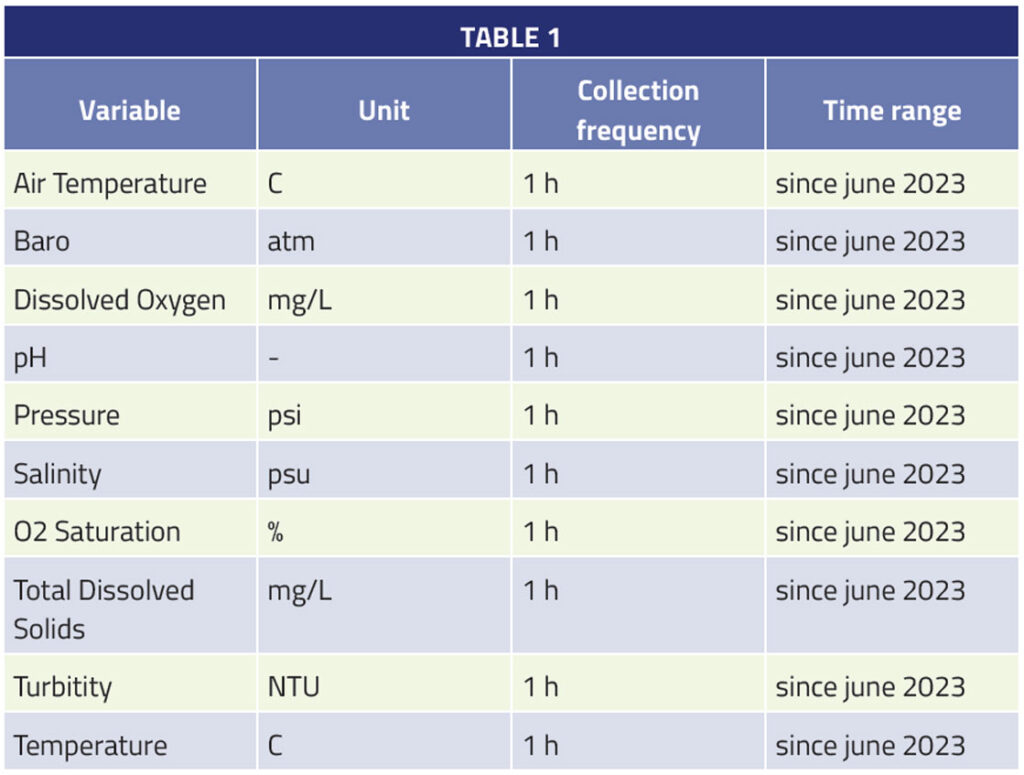
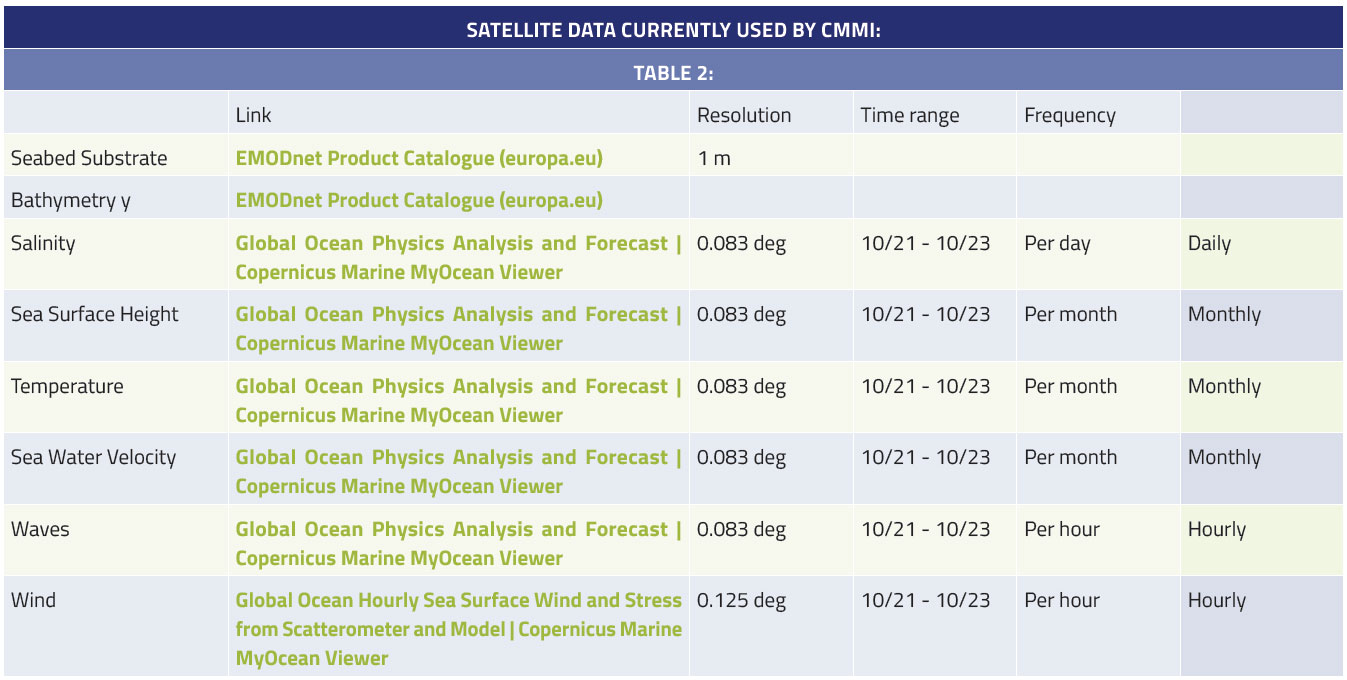
CMMI’s biological data repository:
Coral density populations: The results of this general characterization of the study sites show that the C. caespitosa communities at the studied locations are very localized, with high densities present only in very confined and small areas (Figs 7-9).
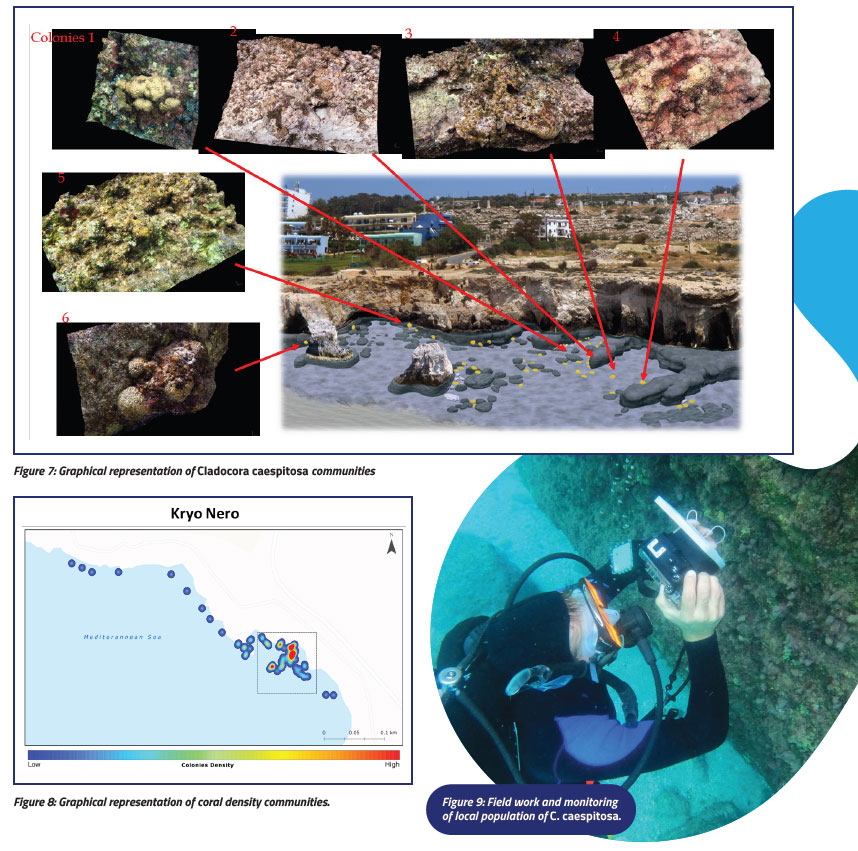
Environmental and biological data available from other sources:
- Posidonia oceanica (Given permission from the competent authorities).
- Mapping of Hard substrate (1170), Soft substrate (1110) and soft substrate (given permission from the competent authorities).
Posidonia meadows mapping available given permission from the governmental authorities CMMI, EMODnet, Copernicus
EMODnet Product Catalogue (europa.eu), Global Ocean Physics Analysis and Forecast | Copernicus Marine MyOcean Viewer, Global Ocean Hourly Sea Surface Wind and Stress from Scatterometer and Model | Copernicus Marine MyOcean Viewer
Monitoring and Management
- existing and planned monitoring
- also plans for additional monitoring during the project (low-cost/citizen science/..)
- this is local/minimal scale, related to the pilot actions
- and maybe also a (recommended) monitoring plan as output from from work in EFFECTIVE
Current status:
The management of the marine area of the site is currently made according to the Fisheries Law and Regulations which interalia concerns the sound fishing management, the protection of Posidonia meadows from trawling activities as well as the protection of dolphins, turtles and seals. 52% of the terrestrial site is game reserve area (no hunting area).
Additionally, specific chemical contaminants are monitored as part of the assessment of the ecological and chemical status of coastal waters. Monitoring initiatives for species of conservation concern, such as the Mediterranean Monk Seal (M. monachus) and Marine Turtles (C. caretta, C. mydas), are also carried out in compliance with the Habitats Directive (92/43/ECC).
Further investigation into the ecological dynamics of Cavo Gkreko MPA is essential for understanding the effectiveness of conservation measures and informing future management strategies. This includes ongoing monitoring of biodiversity, habitat health, and human impacts within the MPA, as well as research on the interactions between species and the surrounding environment. By integrating scientific research with management efforts, we can ensure the long-term success of Cavo Gkreko MPA as a valuable marine conservation area.
Through Effective project, CMMI will contribute with additional data to the existing monitoring system . A “smart” bouy for ongoing environmental data collection has been deployed near the candidate location, and temperature loggers have been deployed within the candidate area, ongoing coral population program in place.
Department of Fisheries and Marine Research
Threats and impact (write a few words about the human activities in the surrounding of the MPA pilot site and their potential impact, habitat destruction, degradation, pollution, climate change impact)
The surrounding area of the Marine Protected Area (MPA) at Cape Greco in Cyprus is characterized by various human activities that have the potential to impact marine habitats and ecosystems.
Tourism: Cape Greco is a popular tourist destination, attracting visitors for activities such as swimming, snorkeling, diving, and boating. Increased tourism can lead to habitat degradation through trampling of sensitive coastal ecosystems, littering, and pollution from recreational activities.
Fishing: Fishing activities, both recreational and commercial, occur in the waters surrounding Cape Greco. Overfishing and unsustainable fishing practices can lead to the depletion of fish stocks and disrupt marine food webs, affecting the overall health of the ecosystem.
Coastal Development: The coastal areas around Cape Greco may be subject to development activities such as construction of hotels, resorts, and infrastructure. Coastal development can result in habitat destruction, loss of biodiversity, and alteration of natural coastal processes, such as erosion and sedimentation.
Pollution: Pollution from various sources, including urban runoff, agricultural activities, and marine litter, poses a significant threat to marine ecosystems in the vicinity of Cape Greco. Pollution can lead to water quality degradation, harm to marine organisms, and ecosystem disturbances.
Climate Change: Climate change impacts, such as rising sea levels, ocean acidification, and increasing sea surface temperatures, can affect marine habitats and species in the Cape Greco MPA. These changes can lead to shifts in species distributions, coral bleaching, and loss of habitat, posing challenges for ecosystem resilience and adaptation.
Aquaculture activities:
Ports and marinas:
EFFECTIVE restoration actions
Actions for Pilot 4:
Revival of threatened species:
CMMI will be leading Pilot 4 in Cyprus, utilising its extensive knowledge of restoration actions for the revival of threatened or endangered species. Pilot 4 will focus on the endemic coral species Cladocora caespitosa (Linnaeus, 1767). In this regard, CMMI will incorporate novel methodologies to provide the framework for restoration actions of this species in the eastern Mediterranean Sea and a comprehensive approach to marine ecological status assessment (Figures 6-7). Specialized floating nurseries for the restoration of endangered coral species (C. caespitosa) will be developed within close proximity to MPA Cavo Greco, Cyprus. The nurseries, located between 2 – 5 m depth, will be partially surveyed and monitored by visual observation from divers as well as state-of-the-art unmanned robotic vehicles. In addition, a “smart” buoy will complement the case study for environmental data collection using specialized sensors.
More specifically, the proposed plan will consist of two phases: i) nursery phase; ii) transplantation/ translocation phase. The main aim with this methodology is to use already fragmented coral nubbins, commonly found in an area adjacent to the MPA, heavily impacted from eutrophication, wind-storms, heatwaves and other extreme event.
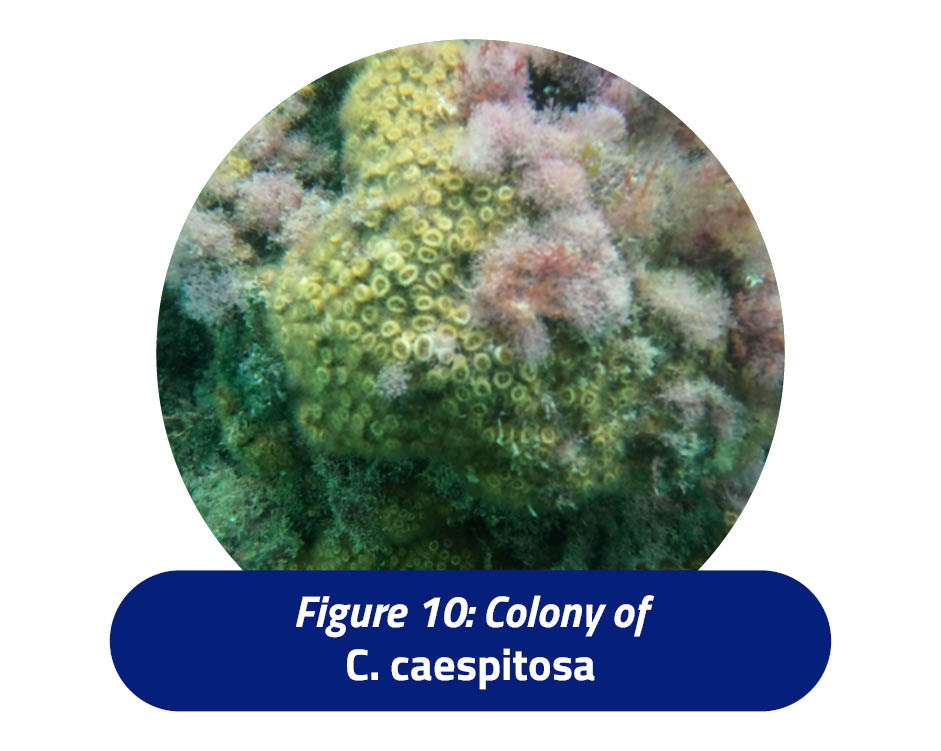
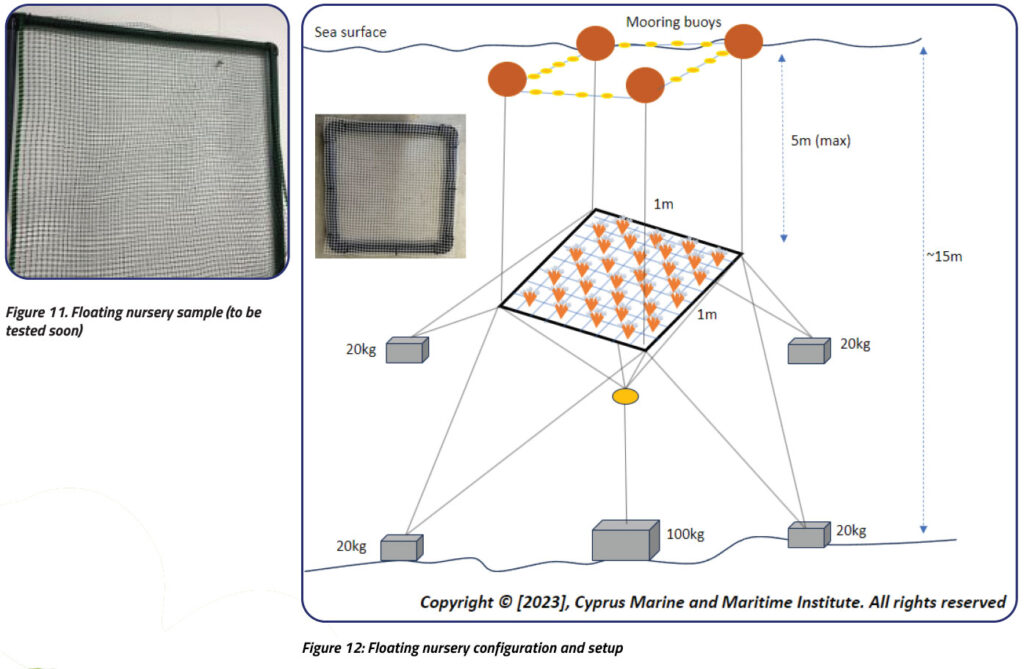
Comprehensive ecological status assessment
CMMI and HCMR aligned with the EFFECTIVE pillars are aiming towards a comprehensive Ecosystem-Based Management System (EBMS). Achieving EBM by coupling the benthic-pelagic compartments (in collaboration with HCMR) (Figure 13).
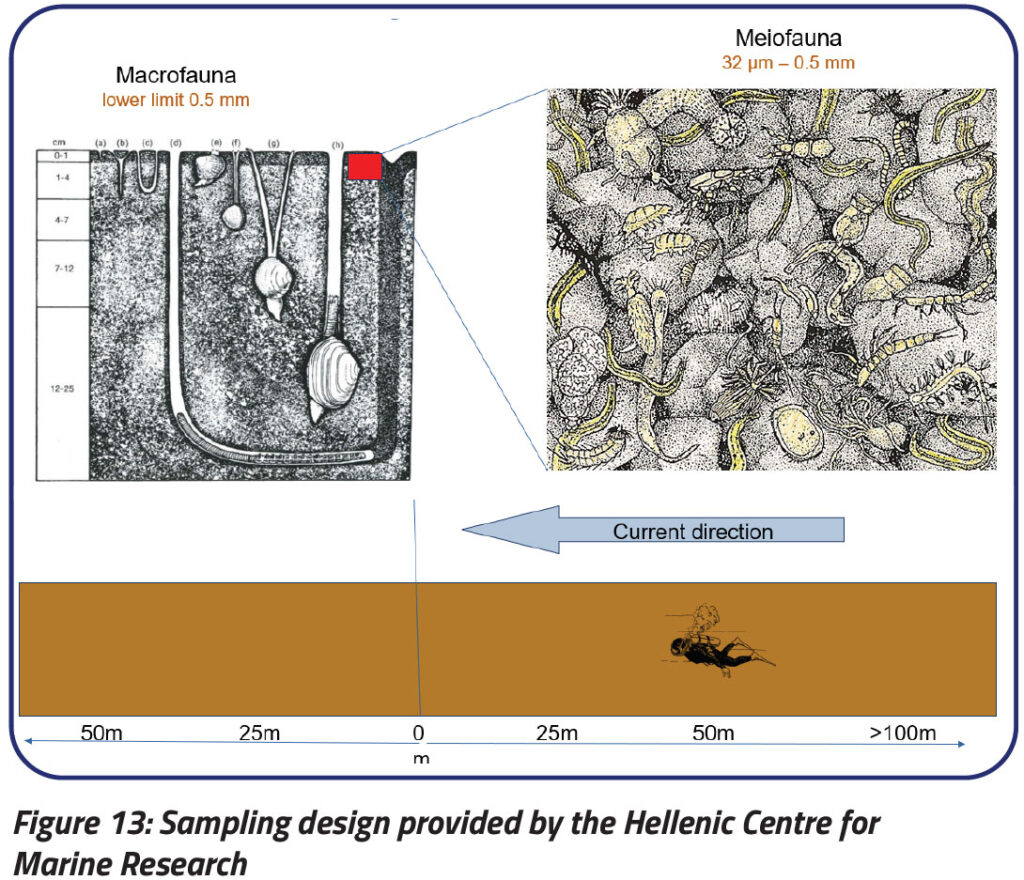
Public Engagement and Citizen Science
https://www.euroturtles.eu/web-app/#/
Available upon request from the governmental authorities
Institutional and legal framework
The responsibility for the Marine Protected Area (MPA) at Cavo Gkreko lies with the relevant government authorities and agencies in Cyprus. Specifically, the management and oversight of the MPA are typically carried out by the Department of Fisheries and Marine Research (DFMR), which operates within the Ministry of Agriculture, Rural Development, and Environment of the Republic of Cyprus.
Within the DFMR, the Marine Environment Division (MED) is often tasked with the implementation and management of marine conservation initiatives, including the establishment and monitoring of MPAs such as Cape Greco. The MED works in collaboration with other government departments, local authorities, non-governmental organizations (NGOs), and stakeholders to ensure effective management and conservation of marine resources within the MPA.
Cape Greco MPA is designated and managed in accordance with its national legislation, the Law on Fisheries…. ( no/ year) , as well as environmental protection laws such as the Environmental Protection Law …..or the Nature Protection Law……
Cyprus adopted several EU directives and strategies that are relevant to the management of marine protected areas, including the EU Biodiversity Strategy , EU Marine Strategy Framework Directive , Habitats Directive (92/43/ECC, etc.
The European Biodiversity Strategy sets targets for marine conservation, including the establishment of protected areas, with the goal of protecting 30% of the EU Sea by 2030, including 10% designated as strictly protected areas where fishing is prohibited. European Marine Strategy Framework Directive (MSFD, 2008/56/EC) provides a framework for the protection and sustainable use of marine resources, aiming to achieve good environmental status in European marine waters by 2020.

